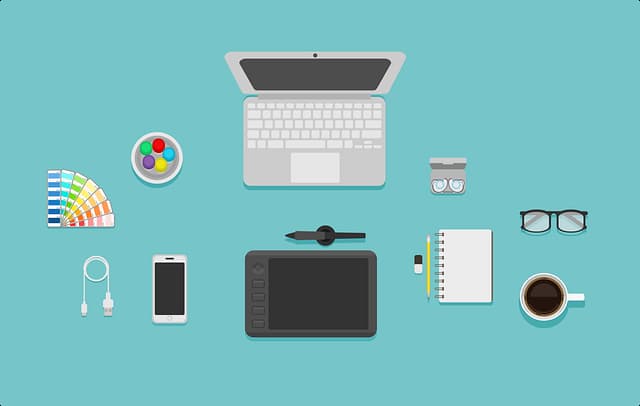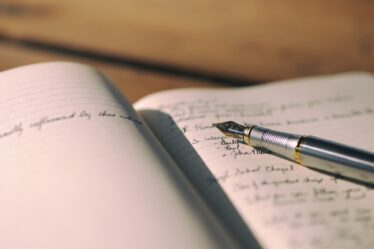
Before purchasing an e-book, you should decide whether it will be used only for reading, or for other purposes.
How to choose an e-book for reading: what to look for
Main criteria when choosing an e-book:
- Type (the actual e-book, compact multimedia device, tablet);
- Screen type;
- Built-in memory capacity;
- Supported formats;
- Built-in battery capacity or battery life.
- The device manufacturer is also important.
Types of e-books
There are three types of e-books, and they differ primarily in the functionality of the device:
- E-books themselves;
- Compact multimedia devices;
- Tablets with predominant functionality of e-books.
Electronic books
Devices of this type have very narrow and limited functionality. They are intended solely for the reproduction of e-books. They are equipped with a special energy-efficient e-ink (“electronic ink”) screen and sophisticated navigation, including separate buttons for turning pages.
ADVANTAGES
- Excellent screen readability;
- Small dimensions and weight.
- Low degree of eye fatigue due to the lack of backlighting of the screen matrix;
- Maximum autonomy (up to several weeks of operation on a single charge);
DISADVANTAGES
- Relatively high price (from 2-3 thousand rubles, while a multimedia device is available for 800-1000 rubles);
- No screen backlight. However, it is worth making a reservation – there are models of e-books with an e-ink display, which is complemented by backlighting for reading in the dark. But they are rare and quite expensive.
- Flickering effect when turning pages due to screen production technology;
- Limited number of supported e-book formats;
Compact multimedia devices
Such devices are a cross between an actual e-reader and a tablet. They usually run on proprietary firmware, the functionality of which determines the functionality of the device itself. Most often, the manufacturers of such devices are Chinese companies like Texet and Ritmix, so the disadvantages can also include the low reliability of the device.
ADVANTAGES
- Color screen;
- Lowest price in its segment;
- Optimal autonomy (up to several days of operation on a single charge);
- Supports a wider file format than a regular e-reader. For example, such a device can play music, audiobooks, images, and in some cases even low-resolution videos;
DISADVANTAGES
- Typically low-quality, desaturated TF display with a trailing effect when turning pages;
- Possible lack of multitasking;
- Long startup time. If you just take an e-book out of your bag and it will be ready for use (the image remains on the screen even when the device is turned off or “sleeping”), then such a device will need to be turned on first and then switched to reading mode;
Tablets
Tablet computers can also be used to read e-books. Moreover, a number of manufacturers (for example, Prestigio and other companies) produce devices in which this feature prevails. In most cases, such tablets run on the Android operating system, which opens up the possibility of flashing and expanding functionality by installing third-party applications. A tablet is a good solution if you plan to use the device not only for reading e-books and listening to audiobooks, but also, for example, for surfing the web or watching videos.
ADVANTAGES
- Support for all e-book formats (expandable by installing third-party software), including rare “comic books”;
- Convenient navigation using the touch screen. Ability to work as a full-fledged tablet computer (reflashing may be required);
- Support for multimedia files;
DISADVANTAGES
- Minimum battery life (up to 10 hours of screen on, even for the most durable devices);
- Due to the multi-functional firmware, it may be difficult to use. Relatively high price (from 5-6 thousand);
- Increased eye fatigue due to intense screen backlighting;
Which is better to choose?
You should choose the type of device based on your needs:
- If you plan to exclusively read e-books, mainly fiction, then a specialized “reader” on an e-ink display would be a good choice. The user will appreciate the low weight of the device and its high autonomy;
- If you plan to read technical literature, various educational materials or richly illustrated publications, you can pay attention to compact multimedia devices with a large color screen. However in this case, the list of formats supported by the reader is very important – for example, many models are not able to reproduce PDF or DJVU;
- If you plan to read richly illustrated literature, comics, manga, books in rare formats (for example, CHM, in which reference books are often typed); and also use the device not only for reading books – it’s worth paying attention to the tablet.
- The budget can be ignored. High-quality e-readers and middle-class tablets cost approximately the same – in the range of 6-8 thousand rubles. Multimedia devices are usually cheaper, but they are not recommended for purchase due to limited firmware capabilities.
The main criteria for choosing an e-book
The main technical characteristics that you should pay attention to when choosing an e-book are:
- Screen type;
- Supported formats;
- Built-in memory capacity;
- Built-in battery capacity or battery life.
Other parameters, such as case material, can be ignored, since they do not determine the performance characteristics of the e-reader.
Screen type
The type of screen directly determines the ease of reading from an e-book and the ability of the device to reproduce color images. Most often, such devices use the following types of matrices:
- “Electronic paper”, also known as e-ink;
- TF or LCD;
- IPS.
Supported Formats
There are many different eBook formats. And therefore, the supported types directly determine whether the file will be played on the device or not. The most common e-book formats are:
- TXT. The simplest and most universal format. Does not support images, XML markup (tables of contents, notes, headings);
- RTF, DOC, DOCX. Microsoft Office office suite formats. They support inserting illustrations and XML markup, but the latter may not be recognized by the reader due to the somewhat non-standard form of the tags;
- FB2. The most common format for art literature. Supports illustrations and simple XML markup, so it can be reproduced in almost any reader;
- PDF. A format that requires a ready-made layout. The page is not “parsed” by the “reader” and is shown as it is. This can make it difficult to read tiny text on small screens;
- DJVU. A format that requires a ready-made layout. The page is not “parsed”, but the book itself may have some semblance of XML markup with pagination and table of contents;
- EPUB. A format that supports images and page layout (“pseudo-layout”), as well as XML tags. It is found infrequently and mainly in highly specialized and technical literature;
- CBR, CBZ. Archives with images. Comics, manga, etc. are most often typed in this format. If you plan to read such literature, the book must necessarily support this format;
- CHM. Help format, supports HTML markup. Rarely found, mostly in reference books.
Thus, if you plan to read fiction, then the book must necessarily support the FB2 format. For highly specialized literature, support for DJVU and EPUB will be required, for scanned magazines or similar publications – PDF, for reference books – CHM, for graphic novels – CBR/CBZ.
Capacity of the internal storage
The capacity of the internal storage directly determines the number of books that can be “thrown” into the memory of the “reader”. And the optimal value of this parameter is determined by preferences in the literature. So, for fiction works, in fact, almost any e-book is suitable, since the FB2, TXT and DOC/DOCX/RTF formats “weigh” little. But for other formats you will need an e-reader with a large amount of internal storage – at least 2 GB. For example, a scanned layout of a magazine can weigh 150-200 MB. But this is only true for e-readers and compact multimedia devices. Tablets, because they run a separate operating system, require even more internal memory. So, the “vital” minimum as of 2017 is 8 GB. Preferably, of course, more – 16 GB or even 32 GB. But 64 GB and higher will only be required if you want to watch movies, TV series, and listen to audiobooks from the tablet.
Battery capacity and battery life

The higher they are, the better. Moreover, the battery capacity is usually indicated only for tablets. Regardless of the manufacturer, price segment and release date of the device, it must be more than 3000 mAh – only in this case the device will work at least until the end of the day.
The best manufacturers
- The best manufacturers of e-books themselves with an “electronic paper” display are Amazon, Onyx, Barnes & Noble, Reader and PocketBook.
- The best manufacturers of compact multimedia devices are Ritmix and Texet.
- The best tablet manufacturers are Xiaomi, Acer, Asus, Samsung and Lenovo.
How to choose an e-book for a schoolchild
When choosing an e-book for a schoolchild, you should first of all pay attention to the type of literature that you plan to read using this device. For novels, poems, and other works of art, a regular “reader” is suitable. But for textbooks, teaching aids, etc. – richly illustrated, with formulas, graphs or other visual content – it is better to purchase a tablet in which reading functions prevail or have a parental control mode.


